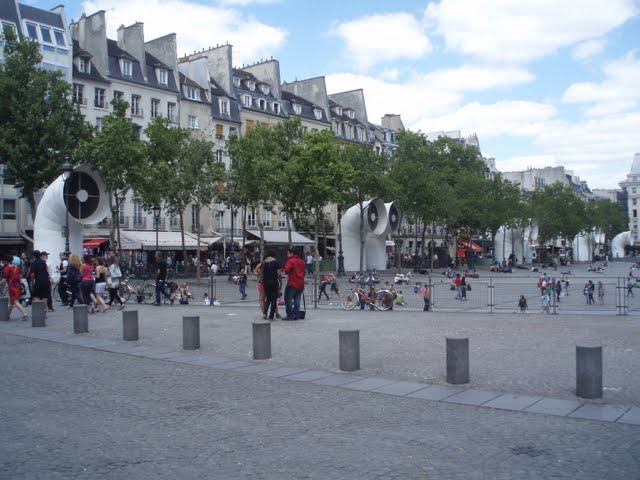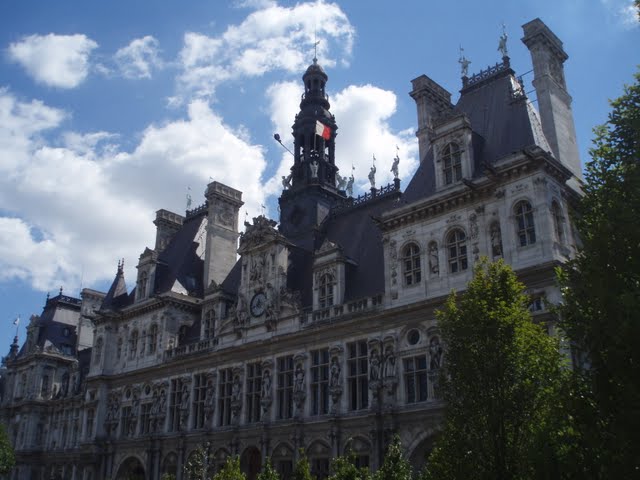We started off near the Fontaine des Innocents, dating to around 1550. It was designed by Pierre Lescot (who was also chief architect of the Louvre). In the late 1700's the fountain was scheduled for destruction, but it was saved and is now the oldest monumental fountain in Paris.
The Les Halles area has a long history. Since the 1100's this area has been home to Paris's central market. Over time congestion in the city center forced all the market stalls to take their produce out to the suburb of Rungis. In the late 1970's an epically unattractive shopping mall was erected. The mall is underground, but the weird 70's-era building space on top is currently being redesigned, so the whole area is pretty much under construction.
Down the Rue Berger (or is it Rue Aubry le Boucher? The street names here sometimes change halfway along the road) is the Pompidou Center. Like the Forum des Halles, the Centre Pompidou also stirred up controversy when it was built in the 1970's. The concept is that the building is "inside out" architecturally -- all the inner workings (air intakes, water pipes, electrical lines) are on the building's outside and are color-coded so that people can see the building "at work". I find it pretty ugly, but I guess it is an appropriate structure to house the Musée National d'Art Moderne.
 |
| The red escalator is on the outside of the building to make more room for exhibit space inside. |
 |
| Across the plaza are the white tuba-like air intakes for the Centre Pompidou. |
Directly behind the fountain is the church of St.-Merry (a modernized version of the name "Médéric"). How appropriate to have the zaniest fountain in Paris next to a church named "Merry"!
 |
| Interesting juxtaposition of church and modern art. |
 |
| Some weird-shaped mounds of grass... |
 |
| Turn into a sphere when viewed from the right perspective. |
At the base of the tower is a really cool exhibit of a work by videographic artist Gabriel Díaz. Over the course of six years Díaz followed six of the primary pilgrimage routes to Santiago de Compostela in Spain. On foot. For more than 3000 miles. Taking photos every eleven steps.
 |
| Six screens showed the photographs in stop-motion video. It was fascinating to watch. |
Seeing this exhibition makes our flâneuring and photo-taking seem completely amateur.





No comments:
Post a Comment